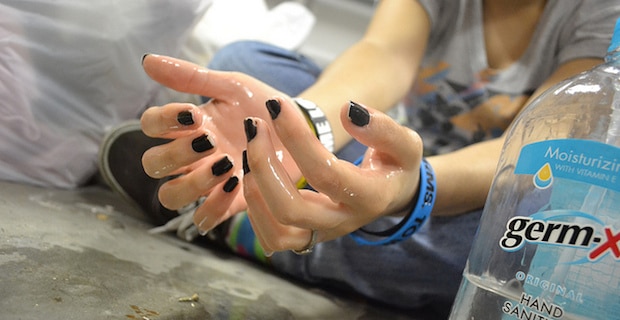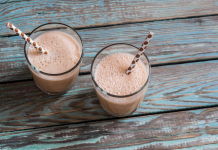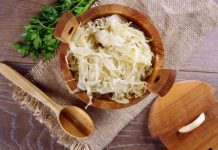
Whether we realize it or not, every one of us has an individually unique microbial eco-system in and on us, a “microbiome,” which is home to more than 100 trillion microbes. Sounds like a lot, doesn’t it? In fact, that outnumbers our human cells by roughly ten to one. And what are all those microbes doing inside and all over our bodies? Well, the good microbes are for the most part hanging out in your gut, supporting your immune system, protecting you from disease, detoxifying your body and possibly even keeping you slim, depending on which microbes your microbiome is hosting.
But also present in your gut are the bad guys, who are believed to play a role in the development of inflammation, obesity and many chronic diseases – which is precisely why it’s important to your long-term health to keep gut flora, both good and bad, on an even keel. Here are a few simple ways to keep your “microbiome” on track to help sustain your wellness for years to come.
Read more about overcoming chronic disease
1. Attention germaphobes – step away from the hand-sanitizer
These days most of us spend the majority of our lives indoors, hermetically sealed into cars, homes and offices, frequently dousing ourselves in antibacterial cleansers. Sure, we’re “clean,” but we’re also severely limiting our exposure to a wide diversity of microbes, whose presence in our guts (and on our skin) have a protective, immunity-boosting effect. In other words living in a HAZMAT-suit lifestyle so many of us take comfort in, may actually be our undoing, making us less able to fend off illness and disease – which is the opposite of what all that cleanliness was supposed to do in the first place. To combat this health-compromising, sterile lifestyle and strengthen your immune system to boot, take a deep breath, step away from the Purell and start exposing yourself – microbially, that is.
2. Bring the great outdoors in
One of the best, and also most pleasurable ways to increase your microbial exposure is to simply open the windows and let the microbes flow! Welcome them into your home, your car, your office – the more, the merrier, and the better for your microbiome. Next, get outside and get your hands dirty – as in, do some gardening, plant some flowers, mow your lawn or do any activity that will connect you and your immune system with the trillions of microbes in the soil. No need to roll around in the mud like a hippie at Woodstock, just get your hands dirty every now and then, literally.
3. Don’t murder your microbes
In other words, don’t kill off healthy microbes in the first place with foods that mess with your microbial balance. Topping the list of microbe-whacking villains: processed foods, genetically modified anything, sugar and wheat. Also doing the microbial perp walk are factory-farmed meats, which come loaded with antibiotics at no extra charge. The problem is, instead of nourishing the body with life-enhancing, microbiome-supporting nutrients, these foods have the opposite effect. They introduce irritants, allergens, carcinogens and inflammation into your body, thus setting you up for a variety of chronic illnesses.
4. Cultivate your microbial garden
Another way to keep your microbial balance on an even keel is to take as few courses of antibiotics as possible. This will help minimize the carpet-bombing effect antibiotics have on gut microbes. Antibiotics indiscriminately take out everything in their path – including the good gut flora your body needs to support long-term health. When your doc or dentist prescribes antibiotics, politely but firmly ask if they’re absolutely, necessary. If the answer is yes, then insist on the shortest course possible.
5. Protect your microbes with probiotics
If you have to take an antibiotic, take probiotics as well, and take them away from each antibiotic dose to help maintain the diversity of your gut flora. Not on antibiotics? Take probiotics anyway. Doing so will keep your microbiome full of live, beneficial organisms, which will help keep digestion, immunity and overall health on track. Look for probiotics that deliver 20-50 billion live organisms per dose and contain a combination of different strains of Lactobacillus and Bifidobacteria. Be Well Probiotics contain the 5 best-researched, most viable and stable strains bacteria known today. Take probiotics as directed, once or twice a day, preferably with meals.
Read more about healing your body from antibiotic overload
6. Feed the machine with greens
Stop me if you’ve heard this before – but plants are really, really good for you! What a shocker, eh? Seriously though, plant-heavy diets are especially helpful for improving your microbial diversity, so hit the produce aisle hard and frequently. Why? Because plants give your microbes something to chew on, to break down, to digest and extract the nutrients from – you’re literally feeding the little critters what they love and need to survive. For those of you not getting enough plants in your diets, I recommend supplementing with an organic powdered Greens drink. So what’s in it for you? A balanced microbiome that’s healthy, strong and well-armed to fight off chronic health problems, inflammatory conditions, heart disease, cancers, and even dementia. My advice? Pile on the plants and enjoy.
7. Enjoy a delicious bowl of probiotics, with a side of prebiotics
Show your microbiome some love by feeding it with probiotic foods, like good, old-fashioned, fermented foods (preferably organic). These fermented goodies like sauerkraut, kimchi, kombucha, and pickled veggies encourage the growth of good bacteria. Add to that some pre-biotic foods, those non-digestible short-chain fatty acids that help your good bacteria flourish. To get your dose, try eating more artichokes, garlic, beans, oats, onions and asparagus.
This article originally appeared on DrFrankLipman.com.
Image: Jade Jackson










